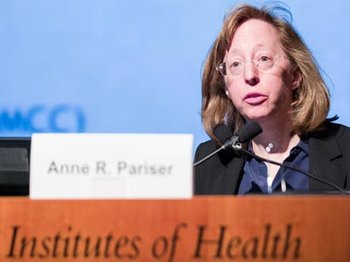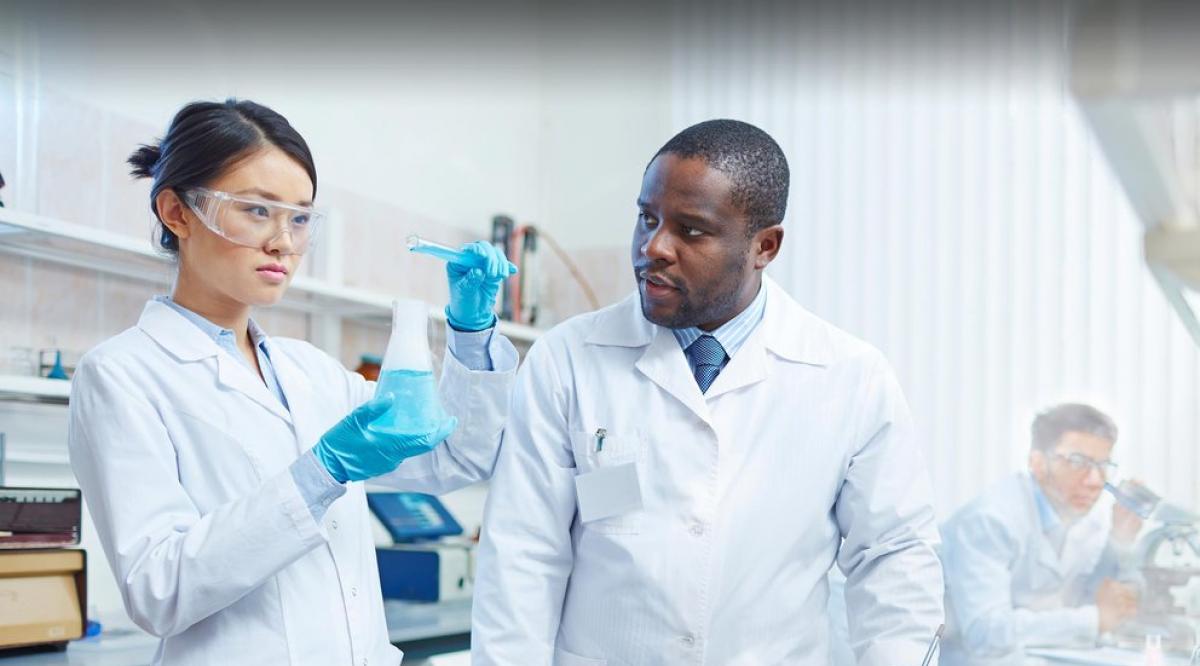The irony of rare diseases is that a lot of people have them.
A single rare, or orphan, disease affect fewer than 200,000 Americans (usually, far fewer), according to the Orphan Drug Act of 1983.
But there are nearly 7,000 rare diseases, together affecting some 30 million Americans. Huntington disease, ALS (Lou Gehrig disease), Tourette syndrome, and muscular dystrophy are among them.
About 80% of rare diseases are genetic, and effective treatment exists only for a few. Most affect children—up to “30% of the kids on the floor at any given time,” said Marshall Summar, MD, chief of genetics and metabolism at Children’s National Health System and director of the Children’s National Rare Disease Institute (CNRDI). “But they stay in the hospital about 40% longer than everybody else, and they also generate over 50% of the hospital bills. As a medical impact group, they are very high up the list.”
The CNRDI was established this year to provide a place where researchers could work on new protocols and people with rare diseases could find a consistent model of care, said Summar. “What we’re hoping to accomplish is take the diffuse field of 7,000 different rare diseases and pull it together into a clinical entity where we can provide a lot better and more rational care.”
The introduction of the human genome project and gene mapping have been a breakthrough for treating rare diseases, Summar said. “Suddenly we’re starting to identify a lot of conditions. We’re able to diagnose patients who, previously, we couldn’t figure out what they had.” Plus, with the use of genetic data to develop more individualized ways to care for patients, “You’re watching the emergence of a new field of medicine,” he said.
Difficult to diagnose, research, and treat
Rare diseases are tough to diagnose because most doctors don’t see them. “Patients tend to enter into what we call a ‘diagnostic odyssey,’” said Anne Pariser, MD, deputy director of the NIH Office of Rare Diseases Research. “It’s really awful for the patients. They go to doctor after doctor. Often this can take years of not knowing what’s going on. They start losing hope until they finally get referred to a specialist familiar with the disease.”

It happened to David Fajgenbaum, a medical student at the University of Pennsylvania. In 2010, Fajgenbaum, a strapping former college quarterback, awoke in a sweat. His abdomen ached, his lymph nodes were swollen, and a rash spread across his chest. An emergency room exam revealed his liver, kidneys, and bone marrow were not functioning normally. He lost vision from a retinal hemorrhage. He gained 70 pounds from fluid. His thought and speech slowed, and he felt exhausted. Steroid treatment allowed him to leave the hospital, but symptoms returned within a month.
Fajgenbaum’s condition stumped his doctors until they sent a sample of lymph node tissue to specialists at the Mayo Clinic. The diagnosis: idiopathic multicentric Castleman disease. However, the medical community had no knowledge about its etiology or underlying biology.
From there, Fajgenbaum took an active role in treatment. His unique perspective as a medical student (and now a doctor) gave him an advantage. He researched the disease, consulted with experts, and even collected and tabulated his own blood samples.
Fajgenbaum saw only temporary improvements in his condition and endured five life-threatening relapses. After one near-fatal downturn, he intuited that his immune system was awry. His doctors began treating him with sirolimus, a drug used to keep kidney transplant patients from rejecting their kidneys. The treatment worked, and Fajgenbaum has been in remission for more than three years.
“A number of rare diseases don’t even have diagnostic criteria,” said Fajgenbaum, assistant professor at the Perelman School of Medicine at the University of Pennsylvania. If you have a rare disease, you have to hope your doctor is aware of it, knows how to test for it, and knows what to look for, he said.
But diagnosis is merely the first challenge, with only 5% of rare diseases having even a single therapy approved by the Food and Drug Administration (FDA), Fajgenbaum said. “ The number one reason is that pathogenesis and the underlying biology of many of these rare diseases is very poorly understood. If you don’t understand the biology of a disease, then it’s very difficult to treat it.”
Then, there is a second challenge: “Once the biology is somewhat uncovered, once you have that thing that you have figured out is wrong, there are fewer incentives to make a drug for rare disease than there are for common diseases. It’s pure economics,” Fajgenbaum said.
Lifeline to research
Patients and families of patients with rare diseases have created a phalanx of organizations to advance research and treatment, such as the ALS Association or the Castleman Disease Collaborative Network, which Fajgenbaum formed.
Federal grants and other incentives, beginning with the Orphan Drug Act of 1983, are designed to encourage research, treatment, and drug development for rare diseases. According to Gayatri Rao, MD, director of the FDA Office of Orphan Products Development, the FDA has designated several thousand drugs and biologics for treating rare diseases with orphan drug status and has approved 600 of them.
FDA grants have been vital to researchers. Gregory Friedman, MD, associate professor of pediatrics at the University of Alabama, is using a $750,000 FDA grant for a three-year phase 1 clinical trial of a genetically engineered virus for the treatment of rare pediatric brain tumors. “This is the type of thing they’re looking for, where there’s a novel approach or novel therapy for a disease that may not be that common but causes a lot of morbidity and can cause a lot of problems for those patients,” said Friedman. “It may not be financially beneficial for a company to try to fund the study in just a small group of patients.”
“Once we understand rare diseases, very often that translates into insights into common diseases.”
Elizabeth Shane, MD
Columbia University College of Physicians and Surgeons
Elizabeth Shane, MD, associate dean of student research at the Columbia University College of Physicians and Surgeons, received $1.6 million from the FDA for a four-year study of the use of denosumab to increase bone mass in premenopausal women with idiopathic osteoporosis. Though common in older women, osteoporosis in premenopausal women is “just kind of a mystery,” said Shane.
“For my research and for the women that I take care of, [the FDA Office of Orphan Products Development] has been a lifeline because I couldn’t have continued my work,” Shane said. The payoff is greater than the treatment of rare diseases. “Once we understand rare diseases, very often that translates into insights into common diseases,” Shane said. “It may end up providing insights into postmenopausal osteoporosis, which is incredibly common.”
The NIH Office of Rare Diseases Research often gives research money to groups “clustered around three or more related diseases,” said Pariser. The NIH also funds rare disease research—about $3.6 billion a year—through its other 27 institutes and centers.
Some rare disease researchers have been able to tap several sources of funds. Dwight Koeberl, MD, professor of pediatrics at the Duke University School of Medicine, has worked for 15 years on a gene therapy to correct Pompe disease, an inherited muscle disease that can affect babies (often fatally) or appear in older children and adults who had shown no sign of the illness.
Early support came from the biotechnology company Genzyme, for research related to enzyme replacement therapy, and the Muscular Dystrophy Association. Subsequent support has come from several NIH institutes.
“I suspect that it’s more difficult than getting funding for diabetes or cancer, things that are relatively more common,” Koeberl said. Nonetheless, with advances in enzyme replacement therapy, and gene therapy to treat rare diseases such as hemophilia, “funding agencies are more aware of rare diseases,” and he has obtained ongoing grant support for his research.
Still, the reality remains, said Fajgenbaum. “The group that funds the most rare disease research is patients and loved ones with that rare disease. For the majority of our rare diseases, if we don’t raise those dollars, if we don’t coordinate the community, no one else is going to do it for a very, very long time. We’ve got to take it on ourselves.”
